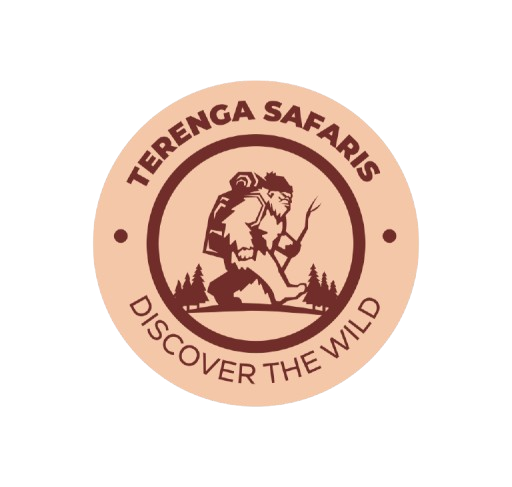The Kazinga Channel in Uganda is one of the most remarkable features of Queen Elizabeth National Park. This narrow waterway connects the small Lake George with the much larger Lake Edward. The channel’s water is supplied by streams flowing from the Rwenzori Mountains, which feed into Lake George before flowing through the Kazinga Channel toward Lake Albert.
Stretching 32 kilometers, the Kazinga Channel is teeming with wildlife, including a high concentration of birds, crocodiles, and hippopotamuses. Many of the park’s major mammal species gather along the channel’s shores to bathe, drink, and feed, making it an excellent spot for wildlife viewing. The hippopotamus population in Queen Elizabeth National Park, particularly in the Kazinga Channel, is one of the largest in the world, with around 1,600 individuals. Alongside hippos, visitors can easily spot Nile crocodiles, buffaloes, elephants, monitor lizards, and various antelope species. For the lucky few, lions and leopards might even be seen drinking from the channel.
The Kazinga Channel is also a top destination for birdwatching, with over 58 species, including the African Shoebill, African skimmers, Black Crake, Crested Crane, Great White Pelican, and Marabou Stork, among others. The rich diversity of both animals and birds makes a boat cruise along the channel one of the most popular activities in the park, contributing significantly to Queen Elizabeth National Park’s status as one of Uganda’s most visited parks.
Kazinga Channel Boat Cruise
A boat cruise on the Kazinga Channel is one of the best ways to experience its abundant wildlife. Since 1952, tourists have been able to take leisurely boat trips to observe the large mammals and other wildlife around the channel’s shores. The boat ride and operates in shifts between 9 am and 5 pm, with each cruise lasting about two hours. The journey begins at a landing site near Mweya Safari Lodge. Visitors can choose between two boat options: the more intimate, but pricier, boat owned by the lodge or the larger double-decker boat operated by the Uganda Wildlife Authority. The Mweya boat is more comfortable and suitable for those seeking a more private experience.
Apart from observing wildlife, the boat cruise also offers a chance to pass by local fishing villages. In the late afternoon, fishermen can be seen preparing their gear for the night’s fishing activities. It’s important to note that fishermen avoid the waters during the day because of the hippopotamuses, but during the night, the hippos leave the water to graze on land, allowing the fishermen to safely fish.
Best time to visit
The dry season is the best time to visit the Kazinga Channel, as it becomes an oasis where numerous animals gather to drink, cool off, and feed. It’s a perfect time for photography, particularly in the late afternoon when the lighting is ideal for capturing stunning shots of the wildlife and water.
Queen Elizabeth National Park Tours
Queen Elizabeth National Park Tours offer exciting opportunities to experience the Kazinga Channel, one of the park’s most iconic features. A boat cruise along the 32 km Kazinga Channel is a highlight of these tours, providing visitors with the chance to see abundant wildlife, including hippopotamuses, crocodiles, elephants, buffaloes, and numerous bird species, such as the African Shoebill and Marabou Stork. The cruise typically lasts for two hours and operates in shifts from 9 am to 5 pm.
Tour packages often include a combination of the boat cruise with game drives across other areas of the park, such as the Kasenyi Plains and Ishasha Sector, famous for its tree-climbing lions. The best time to visit is during the dry season when animals flock to the channel to drink and cool off, making it a prime time for wildlife photography and viewing.
Booking the Boat Trip
To participate in the boat cruise, tourists must sign up for their chosen activities, such as game drives or the launch cruise, at the park offices. These activities are often arranged through a local tour operator, which helps manage logistics like accommodation, transport, and booking boat trips.
On the day of the boat trip, visitors are escorted to the boat and assigned their seats. Before setting off, the captain, crew, and guide are introduced to the group. The guide is crucial during the cruise, providing detailed information about the park, its wildlife, and the animals spotted along the channel. After an exciting two hours of wildlife viewing, the boat returns to the park headquarters and lodge, leaving everyone thrilled by the incredible sights they’ve witnessed.
In summary
the Kazinga Channel offers a unique opportunity to witness a diverse range of wildlife in an awe-inspiring natural setting, making it an unforgettable experience for any visitor to Queen Elizabeth National Park.
